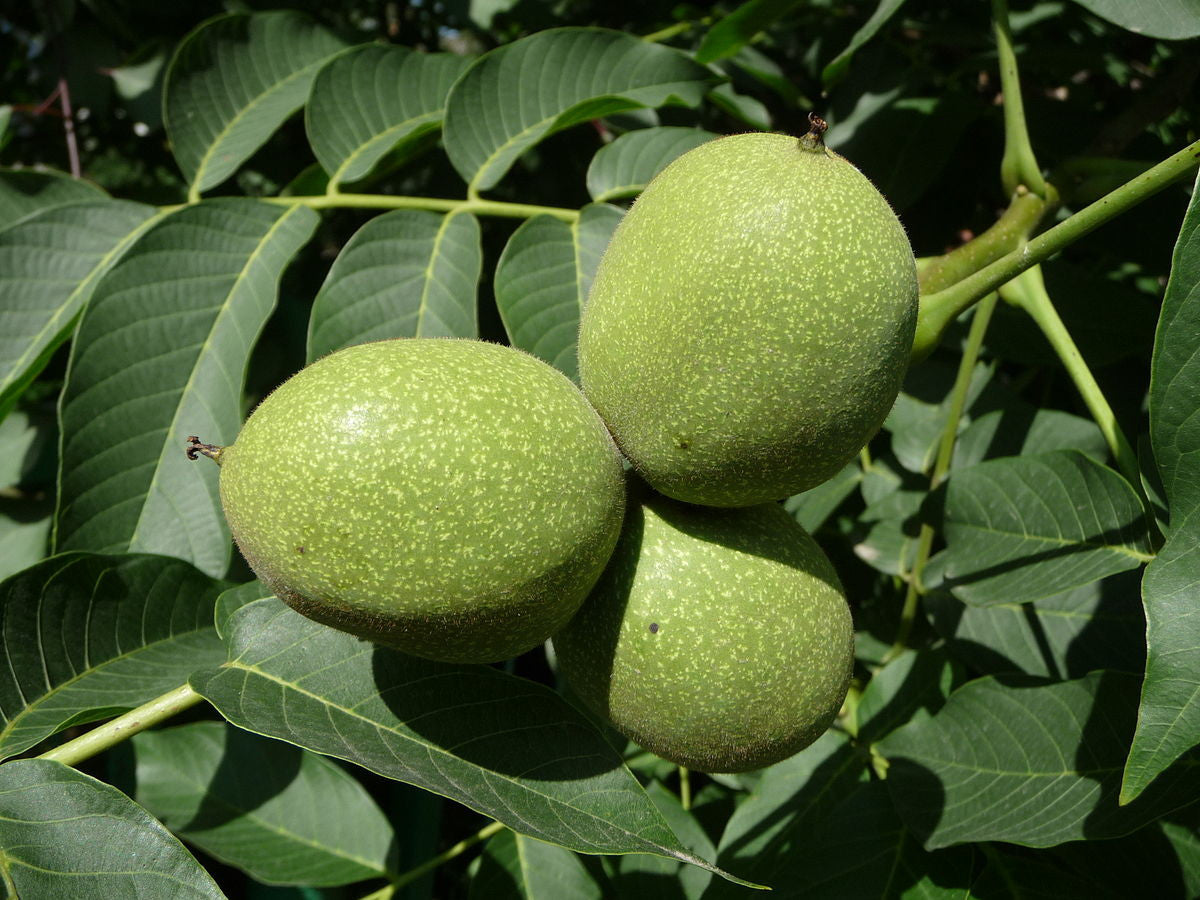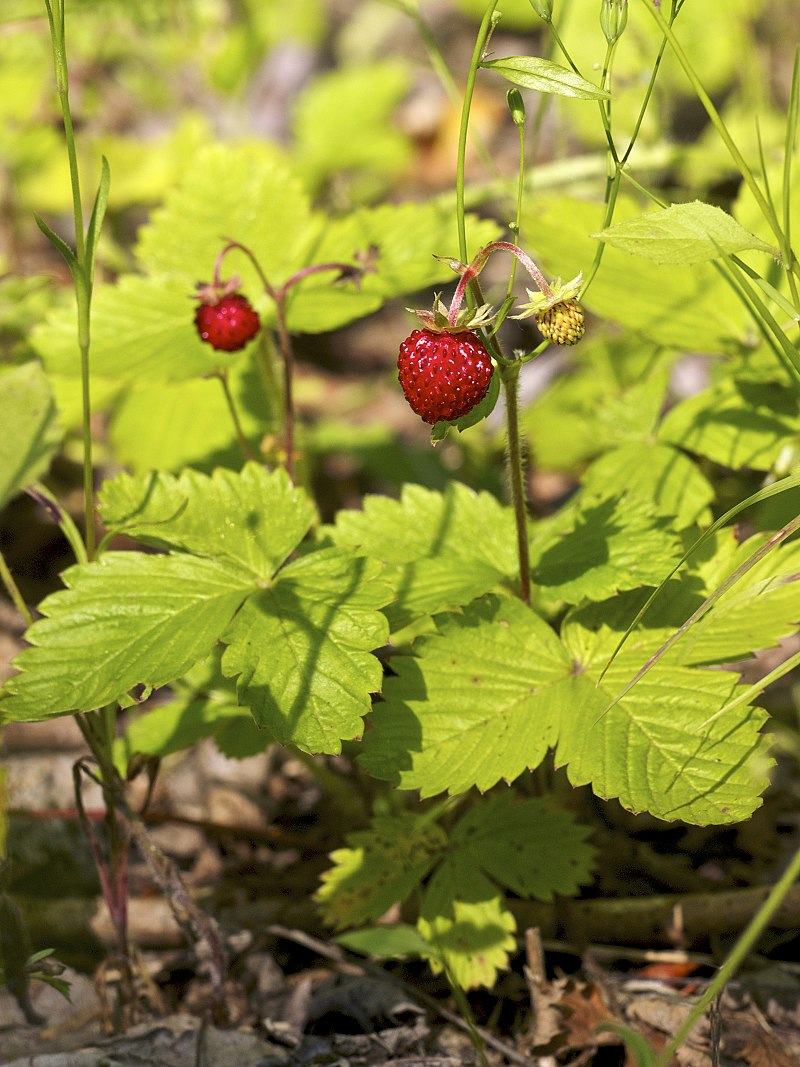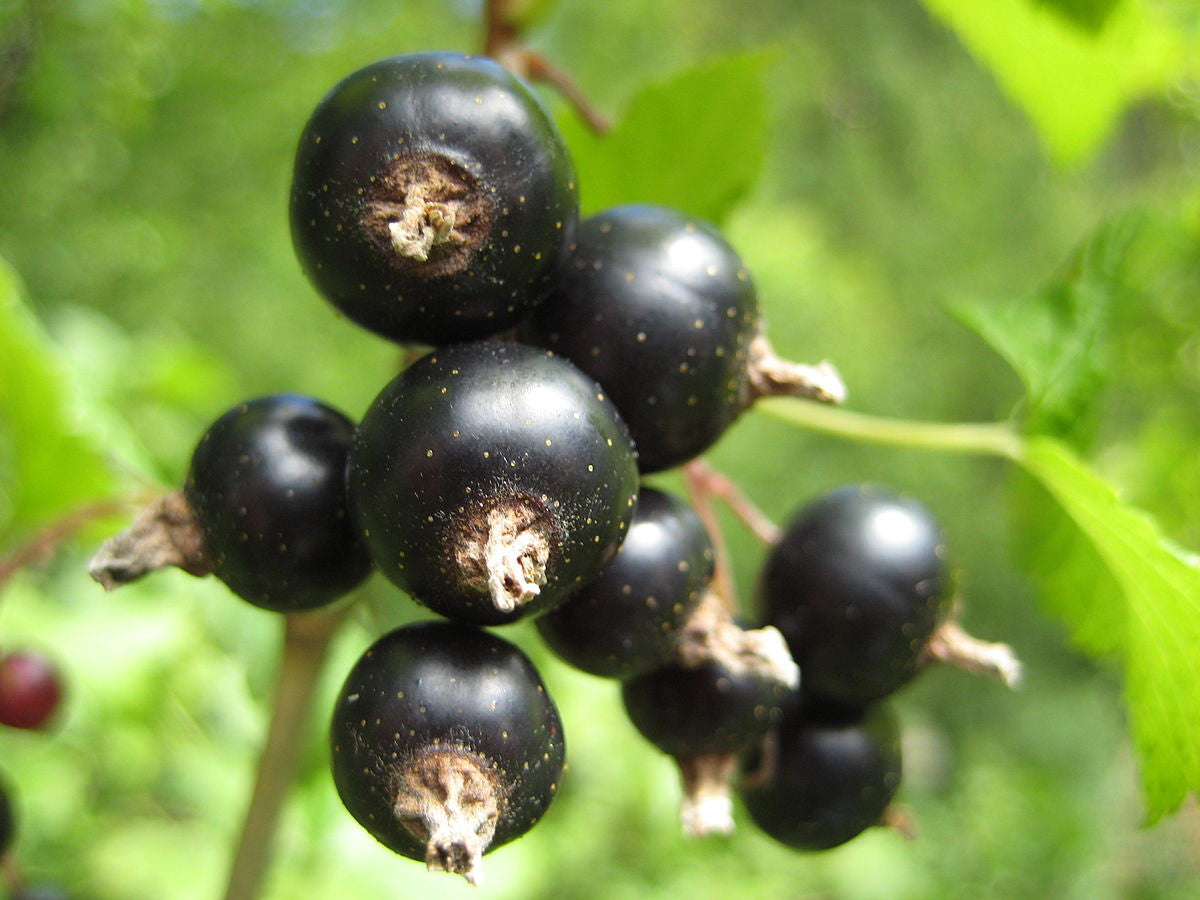
Wild Edible Of The Week - Week 19 - "Green Walnut"
Botanical name : Juglans regia
Common names : Walnut, Green Walnut

Physical appearance : A deciduous tree with spreading crown. Its bark is grey and fissured and can grow up to 30 metres in height. Its leaves are pinnate and alternate and have 5-9 leaflets. It has both male and female flowers with male catkins on new growth and female clusters on old wood. Its fruit is green and fleshy (approximately 4-5cm) with a wrinkled stone inside.

Edible parts : The berries can be eaten raw or can be prepared in many different ways. The leaves can also be used for flavouring or to make various infusions.

(Male flower)
Best places to find : Most commonly found on cultivated land although occasionally, they can be found in warm spots such as hedgerows. Seeds can be spread by birds and mammals.

Time of year : The fruits tend to ripen between July and August.
Serving suggestions : The nuts can be collected when green or when slightly more ripe and dry.
Other uses : The nuts can be made into several preserves, either sweet or savory. Naturally, the nuts can be eaten in their raw state.
NB - Please be sure you know what you are picking. Many plants look similar to one another and many can be poisonous! Please seek professional instruction if you are unsure! Don't risk your life!!!
Photos courtesy of:
Bohringer via Wikimedia Commons
Johannes Zink
George Chernilewsky



